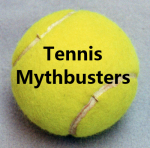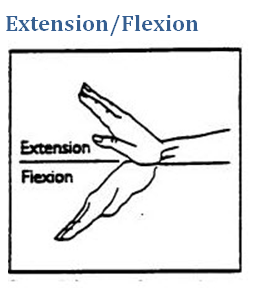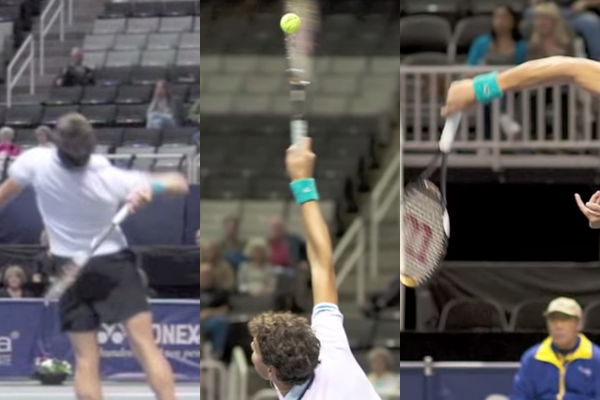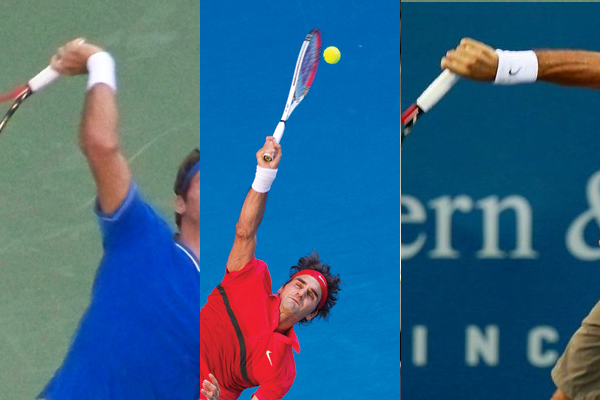-

Tennis Mythbusters: Is The “Wrist Snap” On The Serve Real?
Welcome to a new segment on TacticalTennis called “Tennis Mythbusters”. Over the coming weeks we will look at some of the commonly held ‘wisdoms’ of tennis teachers and players everywhere and examine them to see if they are in truth fact or fiction! In the first installment of the series we will look at the ‘wrist snap’ on the serve.
I’m a professional coach and I hear it all the time from other coaches when they are teaching their players – “more wrist snap on the serve”. And when I stop and think about this is a phrase I’ve been hearing my entire tennis life – for 30 years now! But is the wrist snap a real phenomenon? Is it something we should be striving for and using in our own technique?
What Exactly Is “Wrist Snap”?
To begin with let’s take a quick look at the proper biomechanical terms to describe wrist movement. For our purposes this simple diagram borrowed from Jeffygolf.com will suffice:
The typically held view from most tennis coaches is that the wrist snap on the serve involves taking the wrist from a position of extension, and ‘snapping’ it to a position of flexion as we hit the ball. Ostensibly this is supposed to add power to our serve, and many coaches believe this is the missing piece of the puzzle to get extra ‘pop’ out of your motion. Part of the reason this has caught on and become a part of most tennis instructor’s accepted wisdom is it makes a certain amount of intuitive sense. Surely if I were to add a flick of my wrist at the top of my serve I’d get some more power right?
Let’s take a look at some of the best servers in tennis and see what they do with their wrists around the point of contact shall we?
Milos Raonic
Given he has possibly the most potent serve in the history of the sport, Milos Raonic seemed like a good place to start. I mean after all a man who hits aces on 25% of his first serves in the modern game must be doing something right. The image obviously has three frames – in the far left Raonic has externally rotated his shoulder and extended his racket down his back. At this point you can see his wrist is in a position of mild extension. Frame two shows that, at contact, his wrist is in a neutral position. The third picture on the right is the most interesting one however. Where we might expect his wrist to be in flexion at this point, it actually remains in a neutral position. Instead, Roanic has internally rotated the shoulder such that his racquet face is pointing off to the right.
We’ll revisit this shoulder rotation later in another article, but the important thing to note for now is this: Raonic has no flexion of his wrist through contact with the ball, and as such we can safely say he does not ‘snap’ his wrist when he serves.
Roger Federer
The Swiss Maestro’s serve tells a similar tale. Extension during the early phases of acceleration, to a neutral position at contact. And then following contact the wrist remains neutral with internal rotation of the shoulder occurring. Again we see no flexion, and no evidence of a ‘snap’ of the wrist. Rather as the player reaches up to the ball, the wrist naturally moves from a position of extension to a strong neutral position where it remains until well after contact.
Conclusion
We could certainly examine a multitude of servers at the elite level but the results are consistent. Nadal, Wawrinka, Monfils… every top professional male player examined shows that not a single one of them showed evidence of wrist snap on their serve. The reality is that the wrist simply isn’t as active of a component of the service motion as the vast majority of coaches and players believe. It undergoes extension during the acceleration phase as a means to allow continued, smooth acceleration of the racquet head. However once it reaches a neutral position (which occurs prior to contact), the wrist stabilizes and merely makes minor adjustments for the purposes of aiming the serve.
The verdict? Myth Busted!


